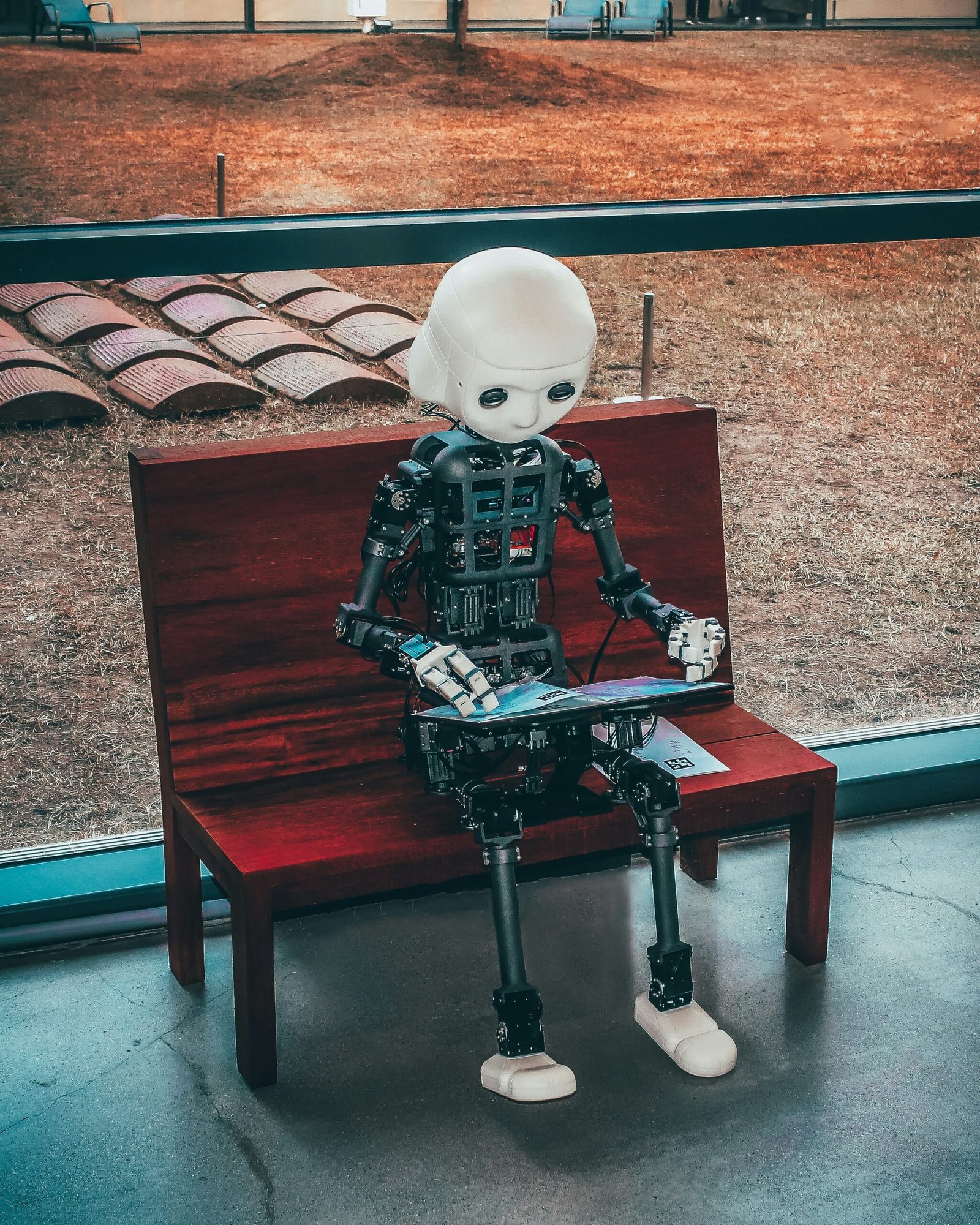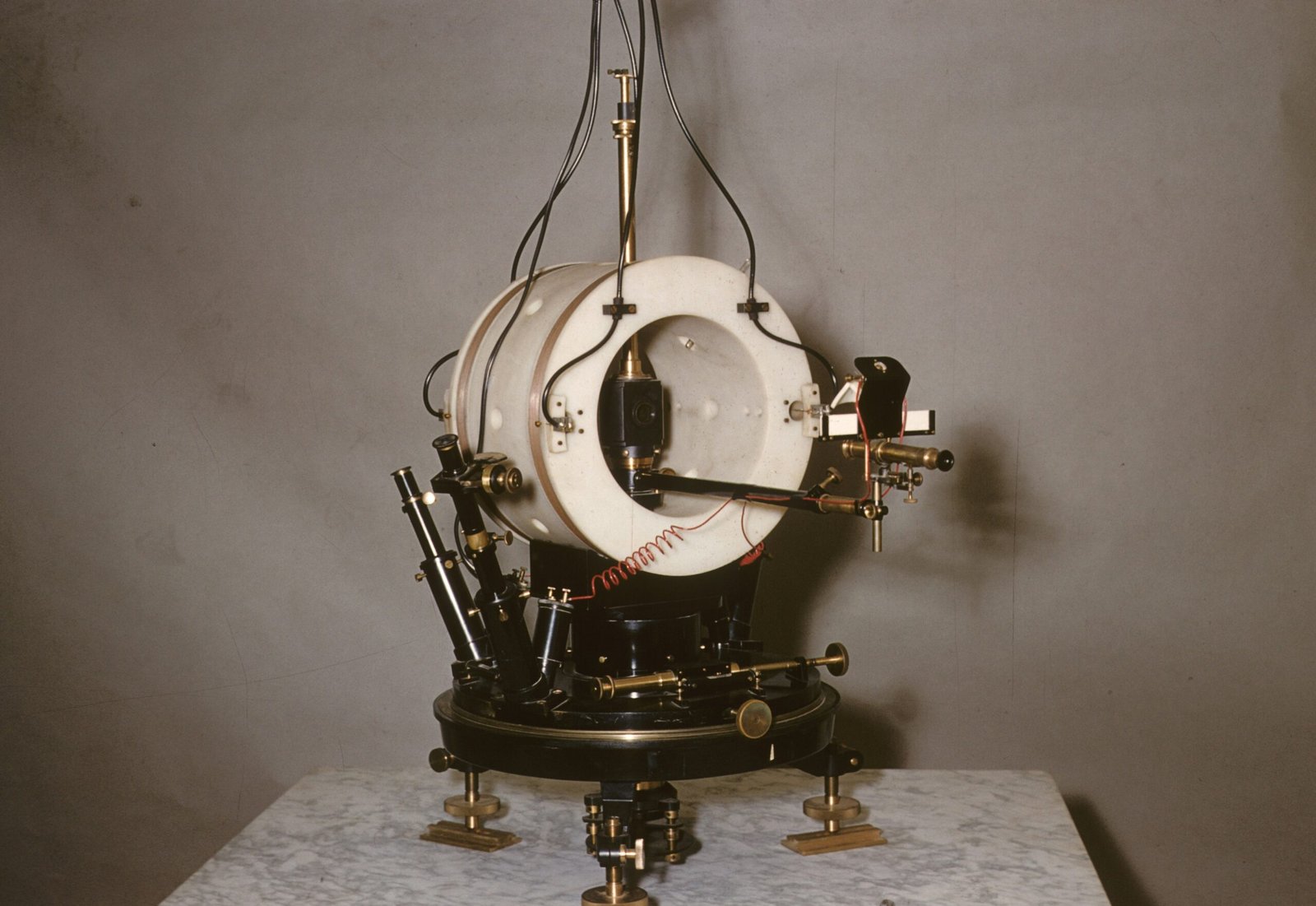
The Future is Now: AI-Driven Automation Across Industries
Introduction to AI-Driven Automation
AI-driven automation represents a pivotal transformation in the contemporary technological landscape, merging the capabilities of artificial intelligence with automation processes to enhance efficiency and effectiveness across various industries. At its core, artificial intelligence (AI) refers to the simulation of human intelligence in machines, enabling computers to perform tasks that typically require human cognition, such as learning, reasoning, and problem-solving. The integration of AI into automation systems is revolutionizing traditional workflows by enabling machines to not only execute routine tasks but also adapt and learn from new data.
In recent years, the significance of AI-driven automation has burgeoned as organizations strive to meet the growing demands for productivity and quality. By utilizing AI technologies, businesses can streamline operations, reduce human error, and make data-driven decisions faster than ever before. This results in enhanced operational efficiency while allowing human workers to focus on higher-level tasks that require creativity and strategic thinking. Industries ranging from manufacturing to healthcare are increasingly adopting AI-powered solutions, demonstrating the versatility and applicability of this technology.
The rapid evolution of AI-driven automation underscores its role in shaping the future of work. As technology continues to advance, it is crucial for organizations to embrace these changes to remain competitive. The potential benefits include significant cost savings, improved service delivery, and the ability to scale operations in response to market demands. In the context of the current digital revolution, understanding AI-driven automation is essential, as it not only facilitates the management of complex tasks but also drives the development of innovative solutions that can lead to the emergence of new capabilities across sectors.
The Role of AI in Customer Service
Artificial Intelligence (AI) has significantly transformed the landscape of customer service across various industries. By implementing AI technologies, organizations are improving user experience while simultaneously optimizing operational efficiency. AI-driven tools, such as chatbots, virtual assistants, and predictive analytics, are at the forefront of this revolution, proving to be invaluable assets in customer support.
Chatbots are particularly noteworthy for their ability to handle routine inquiries with rapid response times. They can effectively address customer questions, facilitate transactions, and provide information without the need for human intervention. By automating these processes, companies can ensure that customers receive immediate assistance, reducing wait times that often frustrate users. This capability not only enhances user satisfaction but also allows human customer service representatives to devote more attention to complex queries that require personal interaction.
Furthermore, virtual assistants powered by AI technology can analyze customer data to provide personalized recommendations and support. By considering past interactions, preferences, and behaviors, these advanced systems offer tailored responses that resonate with individual users, thereby improving the overall experience. Customers are more likely to engage positively with brands that understand their needs, fostering loyalty and promoting repeat business.
Additionally, predictive analytics enables organizations to anticipate customer behavior and preferences. By analyzing historical data, businesses can identify trends and proactively address potential issues, thereby enhancing customer satisfaction. This predictive aspect of AI not only streamlines service provisions but also reduces the chances of customer churn. As AI continues to evolve, its role in customer service will be imperative, reshaping how organizations interact with their clientele and ensuring a more efficient, personalized approach to support.
Transforming Healthcare with AI Automation
The integration of artificial intelligence (AI) into the healthcare industry is revolutionizing various facets of medical practice and patient care. One of the most significant impacts of AI automation is in the area of diagnostics. Traditional diagnostic procedures often rely heavily on human interpretation and intuition, which can introduce errors. However, AI algorithms capable of analyzing vast amounts of data can identify patterns in medical images and lab results with exceptional accuracy, aiding healthcare professionals in making more precise diagnoses. For instance, machine learning models trained on diverse datasets can help detect conditions such as cancer at earlier stages compared to conventional methods.
Furthermore, AI automation facilitates continuous patient monitoring, allowing for a more proactive approach to healthcare. Wearable technology and smart devices equipped with AI can track a patient’s vital signs in real-time, delivering immediate alerts to caregivers if anomalies are detected. This capability not only enhances patient safety but also empowers healthcare providers to intervene promptly, potentially preventing critical health crises. Through such innovations, healthcare organizations are able to reduce hospital readmission rates and improve patient outcomes significantly.
In addition to diagnostics and monitoring, AI is paving the way for personalized medicine, which tailors treatment plans to individual patient profiles. By analyzing genetic information alongside lifestyle and environmental factors, AI systems can recommend personalized therapies that are more effective than one-size-fits-all approaches. This advancement not only optimizes treatment effectiveness but also minimizes the side effects often associated with traditional therapies. Overall, the deployment of AI-driven automation in healthcare is transforming the industry by reducing human error and increasing operational efficiency, ultimately translating into enhanced patient care.
AI and Automation in Manufacturing
The integration of AI-driven automation in the manufacturing industry is reshaping traditional operations and setting new benchmarks for efficiency and productivity. Smart factories are emerging as the cornerstone of this transformation, where interconnected systems utilize advanced robotics to perform tasks that were previously labor-intensive. With the deployment of AI technologies, manufacturers can leverage real-time data to enhance decision-making and streamline production processes.
One of the most significant benefits of AI in manufacturing is the marked increase in production capacity. Automated systems equipped with AI algorithms can operate continuously, significantly mitigating the constraints posed by human fatigue. This capability allows for round-the-clock production without compromising quality, thus ensuring that manufacturers can meet rising market demands swiftly and efficiently. Furthermore, robots in smart factories can be programmed to carry out complex tasks with great precision, further optimizing manufacturing processes.
Another area where AI-driven automation is making strides is in predictive maintenance systems. By analyzing data collected from machinery and equipment, AI can predict potential failures before they occur, effectively reducing downtime. This foresight allows manufacturers to schedule maintenance proactively, thus minimizing operational interruptions and enhancing productivity. The reduction in unexpected breakdowns translates to considerable cost savings, making AI integration not just a technological upgrade but a financial one as well.
AI is also playing a crucial role in optimizing supply chains. Through enhanced data analytics and machine learning, manufacturers can gain insights into inventory levels, demand forecasting, and logistical efficiencies. These insights support better resource allocation and inventory management, ensuring that materials are available when needed, thus preventing production delays. As AI continues to evolve, its impact on manufacturing is projected to grow, solidifying its necessity in the industry.
Creative Fields Enhanced by AI Technologies
Artificial Intelligence (AI) has increasingly made its presence felt across various creative industries, from visual arts to music and content creation. The emergence of AI-generated artworks is perhaps one of the most intriguing developments in the art world. Utilizing algorithms that can analyze and emulate styles from historical artworks, AI systems such as DALL-E and Artbreeder are capable of producing original pieces that provoke thought regarding the nature of creativity itself.
In music, AI has shown its potential in composition and production. Tools such as OpenAI’s MuseNet and algorithms developed by Aiva are enabling musicians to create complex musical arrangements. These applications analyze vast databases of musical styles, genres, and techniques to generate compositions that can be indistinguishable from human-created music. This fusion of human creativity and algorithmic innovation illuminates the possibility of AI as a collaborative partner in the artistic process rather than a mere replacement for human effort.
However, the integration of AI in creativity raises significant ethical questions. The line between human-generated and AI-generated content becomes blurred, leading to challenges in authorship and intellectual property rights. Who owns the rights to an artwork or a composition created with the assistance of AI? Additionally, there are concerns regarding the potential for AI to influence trends and tastes in the creative sectors, possibly undermining the diversity and authenticity of artistic expression.
As the role of AI in these creative fields continues to evolve, it is crucial for artists, musicians, and content creators to engage in discussions about the implications of these technologies. By fostering a collaborative relationship between human ingenuity and AI, the creative industries can navigate the challenges ahead while embracing the opportunities that AI has to offer.
The Technology Behind AI-Driven Automation
The landscape of AI-driven automation is shaped by several advanced technologies that work in tandem to enhance operational efficiency across industries. One of the primary technologies is robotics, which encompasses the design, construction, operation, and use of robots. These machines perform tasks that range from simple assembly line functions to complex procedures in medical surgery. Robotics leverages sensors and AI algorithms to adapt to various environments, ultimately allowing for greater precision and safety in processes that are traditionally labor-intensive.
Another vital component is Natural Language Processing (NLP), a branch of artificial intelligence that focuses on the interaction between computers and human language. NLP enables machines to understand, interpret, and respond to human language in a meaningful way. By harnessing NLP, businesses can automate customer service processes through chatbots and virtual assistants, facilitating improved communication and operational speed. This technology allows for seamless interactions, streamlining workflows and ensuring that employee time is optimally utilized.
Machine learning, a subset of AI, is also instrumental in powering automation technologies. Through algorithms that learn from and make predictions based on data, machine learning enables systems to improve over time without human intervention. This capability allows businesses to analyze vast amounts of data to identify trends, optimize processes, and inform decision-making. As machine learning algorithms evolve, they become increasingly sophisticated, making automation systems more intuitive and responsive to changing conditions.
In conclusion, the synergy of robotics, natural language processing, and machine learning forms the backbone of AI-driven automation. These technologies not only work together to create seamless automated systems but also drive efficiency and innovation in countless industries. As the landscape continues to evolve, the integration of these technologies will likely shape the future of work and productivity.
Challenges and Considerations in AI Automation
As organizations increasingly adopt AI-driven automation across various industries, numerous challenges and considerations must be addressed to ensure a smooth transition. One of the most significant concerns revolves around job displacement. The introduction of automated systems can lead to a reduction in the need for human labor, particularly in tasks that are repetitive or predictable. While such advancements aim to enhance productivity and reduce operational costs, they may also result in substantial disruptions for the workforce. Industries must proactively consider reskilling programs to support employees whose roles are at risk of being automated. Balancing technology integration with workforce sustenance will be crucial in navigating potential job dislocation risks.
Another pressing issue is data privacy. The automation of processes often entails the collection and analysis of vast quantities of personal and sensitive information. As AI systems become more prevalent, organizations must ensure robust frameworks are in place to protect data and comply with regulations. A failure to address data privacy concerns can lead to breaches, loss of customer trust, and potential legal ramifications. Consequently, businesses must prioritize creating transparent data handling policies and investing in cybersecurity measures to mitigate risks associated with AI-driven automation.
Furthermore, an overreliance on technology can pose significant challenges. While AI systems are designed to improve efficiency, becoming overly dependent on these technologies might result in a decline in critical thinking and problem-solving skills among the workforce. Employees may become accustomed to relying on automated systems, which can lead to skill erosion and hinder innovation. Therefore, a balanced approach, in which automation complements rather than entirely replaces human expertise, is essential. Organizations should strive to find the right equilibrium between leveraging the benefits of AI and fostering a skilled workforce capable of adapting to continually evolving market demands.
The Future of Work in an AI-Automated World
The advent of AI-driven automation is set to fundamentally transform the workplace landscape. One of the most notable trends is the shift towards remote working. With advanced AI tools facilitating seamless communication and collaboration, organizations are increasingly embracing flexible work environments. Remote working not only allows employees to maintain a better work-life balance but also expands the talent pool for businesses, enabling them to recruit skilled individuals from various geographical locations without the constraints of traditional office spaces.
In this evolving job market, we are likely to witness the emergence of new roles that capitalize on the capabilities of AI technologies. Positions such as AI ethicists, data curators, and automation specialists are becoming more relevant, as firms seek professionals who can navigate the complex interplay between technology and human decision-making. Moreover, industries will adapt by integrating AI professionals into their teams, enhancing productivity through automation while ensuring that human expertise remains essential for critical thinking and oversight functions.
To thrive in this AI-automated world, workers must prioritize developing skills that complement automation. Emphasizing critical thinking, emotional intelligence, and creative problem-solving will become increasingly important, as these inherently human skills cannot be easily replicated by machines. Furthermore, workers may need to engage in continuous learning and development to stay competitive. Upskilling and reskilling initiatives will be crucial for ensuring that employees remain relevant and equipped to handle new job demands as the automation landscape evolves.
Ultimately, the successful integration of AI into the workplace will heavily rely on the adaptability of both workers and businesses. Organizations that foster a culture of flexibility and encourage collaborative interactions between humans and AI will likely lead the way in this transformative era, paving the path for a productive and innovative work environment.
Conclusion: Embracing AI-Driven Automation
As we navigate through an era defined by rapid technological advancements, the significance of AI-driven automation cannot be overstated. Across various industries, automation powered by artificial intelligence is transforming traditional processes, enhancing efficiency, and opening new avenues for innovation. This blog post has explored the multifaceted impacts of AI on sectors such as manufacturing, healthcare, and finance, illustrating how these technologies are reshaping the workforce and redefining operational strategies.
Adopting AI-driven automation is not merely about technological integration; it necessitates a shift in mindset. Businesses must be proactive in understanding how to leverage these advancements while considering ethical implications and the potential societal impact. The importance of developing comprehensive strategies that prioritize both efficiency and employee wellbeing is paramount. Organizations that approach AI adoption thoughtfully are positioned to yield substantial benefits, including improved productivity and enhanced quality of service.
Moreover, embracing AI-driven automation fosters a culture of continuous improvement. By investing in employee training and reskilling initiatives, companies can ensure that their workforce remains relevant in an evolving job market. This holistic approach not only enhances the operational framework but also facilitates a smoother transition for workers adapting to new technologies. As we continue to witness the transformative power of AI, collaboration between individuals, organizations, and policymakers will be vital in realizing its full potential.
In conclusion, while the integration of AI-driven automation presents numerous opportunities, it is imperative that we proceed with caution. A responsible and ethical approach towards automation will maximize the benefits while mitigating risks. By embracing these technologies thoughtfully, we can work towards a future where AI enhances human capabilities and drives sustainable growth across industries.


